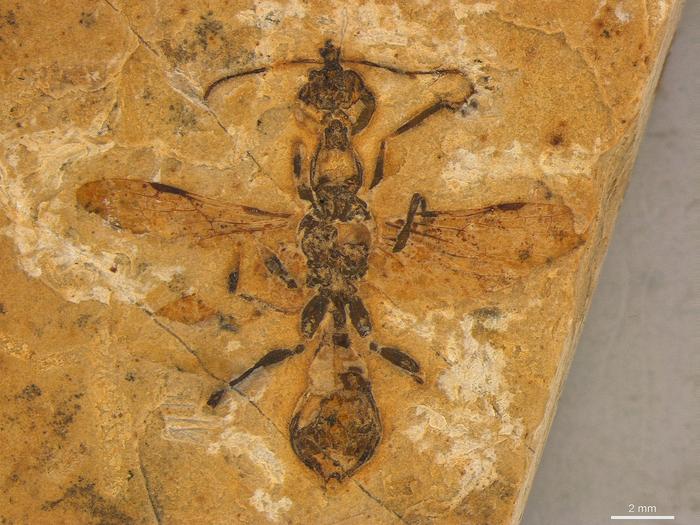Now Reading: 113-Million-Year-Old Fossil Sets Record as Oldest Hell Ant Discovered
-
01
113-Million-Year-Old Fossil Sets Record as Oldest Hell Ant Discovered
113-Million-Year-Old Fossil Sets Record as Oldest Hell Ant Discovered

Rapid Summary
- Discovery: A 113-million-year-old “hell ant” fossil was found in Brazilian limestone, making it the oldest known specimen of its kind.
- Species Details: The fossil belongs to the extinct Haidomyrmecinae subfamily from the cretaceous period. These ants are characterized by scythe-like jaws used for predation.
- Ancient context: Ant fossils have previously been discovered in amber from France, Burma, and the Dominican Republic, indicating their wide distribution in evolutionary history. This discovery provides evidence of their existence in Brazil during Early Cretaceous times.
- Research Highlights: Scientists identified this unique specimen while examining a collection at Museu de Zoologia da Universidade de São Paulo. Advanced imaging revealed distinct anatomical features like mandibles scissoring vertically instead of moving side-to-side as seen in modern ants.
- Meaning: Researchers believe such complex adaptations appeared earlier than previously assumed.
Indian Opinion Analysis
The discovery of a 113-million-year-old hell ant fossil in Brazilian limestone underscores significant scientific insights into insect evolution and prehistoric ecosystems.It reveals early diversification and global dispersal patterns within ant species during the Cretaceous period. For India,which boasts rich biodiversity and paleontological sites like Bhimbetka Rock Shelters or Jaisalmer’s geological formations,this study reinforces the importance of systematically exploring local fossil resources for breakthroughs that connect regional ecosystems to global evolutionary histories.
While primarily focused on Brazil’s Crato Formation, this research also exemplifies how museum collections can yield critical discoveries long after initial excavation-an approach Indian researchers could adopt more systematically within our archives to unearth hidden paleontological treasures. Additionally, advancements such as 3D imaging point toward tools that could play a pivotal role for Indian scientific efforts in detailed analysis and classification.
This finding is both an example of science harnessing global cooperation across teams (Brazilian institutions alongside wider academia) while further highlighting nature’s complexities preserved over millions of years-a outlook valuable to researchers worldwide.



























